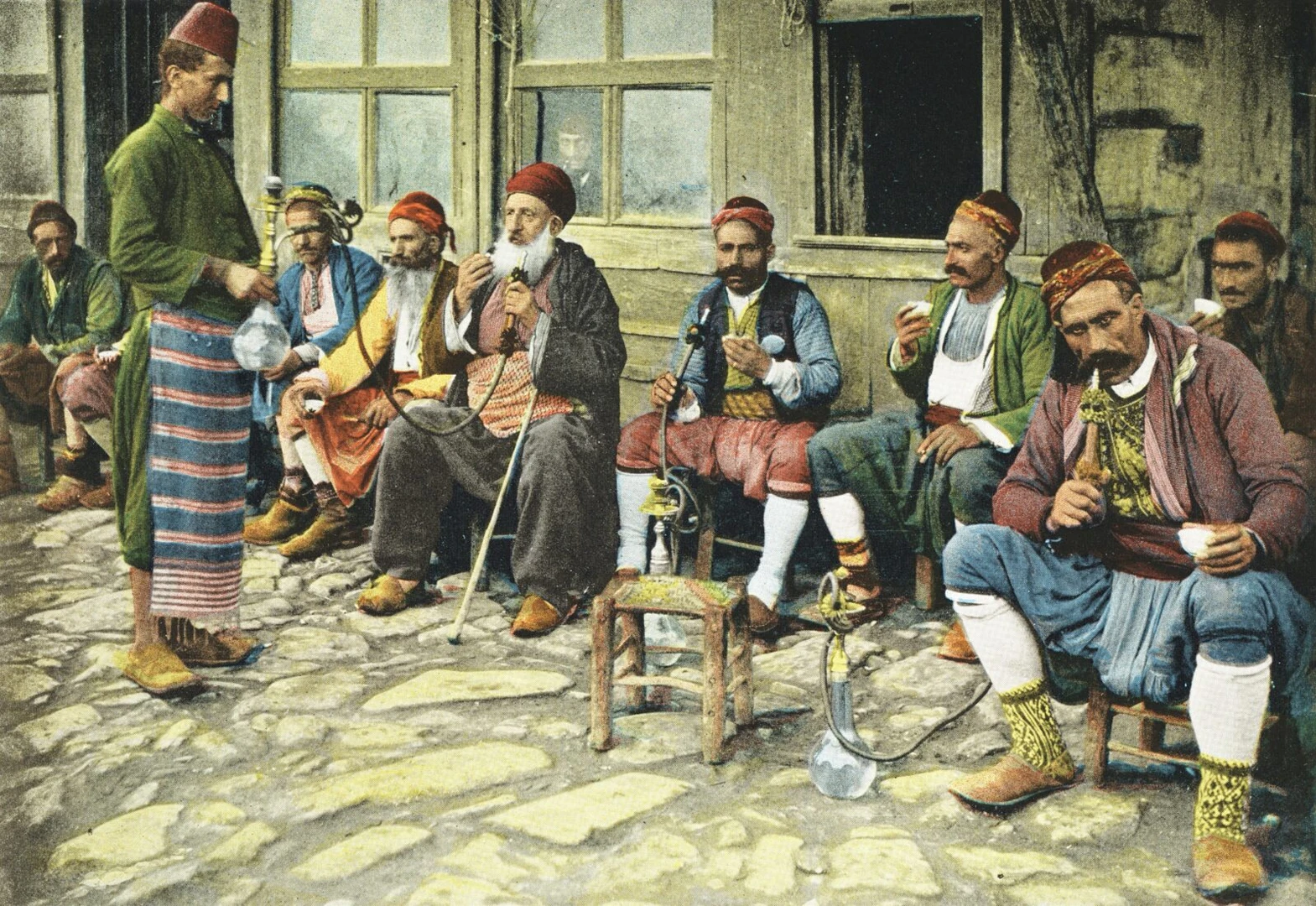Why are Turks heavy smokers? Historical look at tobacco consumption
 A man smokes a cigarette with his mask down in Kırklareli, Türkiye, November 13, 2020. (AA Photo)
A man smokes a cigarette with his mask down in Kırklareli, Türkiye, November 13, 2020. (AA Photo)
In the latest analysis of smoking rates globally, Türkiye has one of the highest number of smokers in the world. According to Professor Bektas Murat Yalcin, Head of Family Medicine at Ondokuz Mayis University, Türkiye ranks 9th globally and 3rd in Europe in terms of smoking rates.
“Roughly 18 to 19 million people smoke in Türkiye,” Yalcin said in a previous statement to Turkish media. “On average, one in every two men smokes, and one in every four women above the age of 18 is a smoker. These are extremely high figures.”

Turks are famously known for their hospitality. But what would you think if you were a guest in a Turkish home and someone offered you cigarettes on a plate?
This was once a common custom in Türkiye, though it no longer exists today. Some Turkish traditions and customs unfortunately developed long before the harmful effects of smoking were widely recognized. By that time, smoking had already become a deeply ingrained habit.
So, how did smoking become so widespread? Just like in many parts of the world, one of the main reasons was the marketing efforts led by American cigarette companies. From the 1950s onward, cigarette advertisements began portraying a masculine image, often displayed on billboards, which influenced many men to aspire to that image. In the 1970s, Turkish visual media also contributed to this trend. Characters portrayed as wealthy or as struggling individuals battling sorrow often smoked in films. Smoking was depicted as a source of pleasure, a tool for relaxation, and even a social connector, subtly promoting it to the public.
So how did tobacco first arrive in Türkiye?

Tobacco’s journey from the Americas to Anatolia
Tobacco arrived in the Ottoman Empire in the late 16th century, soon after Christopher Columbus introduced the plant to Europe. According to Professor Ekrem Bugra Ekinci, upon meeting Caribbean islanders, Columbus and his crew were gifted what they called “tobako”—dried leaves with unknown properties. It wasn’t long before the Portuguese spread this plant to the European continent.
The Ottomans planted their first tobacco crop in Milas, in 1583. Initially believed to have medicinal benefits, the habit rapidly spread throughout the empire. Ottoman historian Pecevi wrote that British traders popularized tobacco in Istanbul in the early 1600s by marketing it as a remedy. From pleasure-seekers to scholars, many became hooked.
Fires, fatwas and fatal consequences
The first serious crackdown came under Sultan Ahmed I in 1609, banning the sale and use of tobacco due to its interference with work and public life. Violators were publicly shamed with their smoking sticks shoved up their noses.
Things turned drastic in 1633 when a fire in Istanbul’s Cibali district, allegedly caused by a sleeping smoker, destroyed over 20,000 homes and left 50,000 people homeless. Sultan Murad IV enforced a harsh ban, going so far as executing violators. The ruler would disguise himself and patrol the streets to catch offenders.
Despite religious debates, the ban was lifted under Sultan Mehmed IV after a fatwa from Shaykh al-Islam Bahai Efendi, a known tobacco user. Tobacco cultivation resumed, spreading from eastern Anatolia to the Balkans.

A legalized habit and industrial boom
Tobacco production was once state-controlled under the Tekel monopoly. However, major shifts occurred during the late 20th century.
In 1984, Türkiye began importing foreign cigarette brands. By 1991, international giants like Philip Morris, Camel, and Winston opened factories inside Türkiye. Today, 90% of the cigarette market is controlled by foreign brands.
Legislative push for a smoke-free society
Despite a history of widespread consumption, Türkiye has implemented some of the world’s strictest anti-smoking laws. A 1996 law banned tobacco advertisements, followed by a 2008 regulation that outlawed smoking in all enclosed public spaces.
By 2009, Türkiye became the third European nation to declare itself a “smoke-free zone.” In 2013, smoking inside vehicles was also banned. As of January 2020, plain packaging rules went into effect, standardizing cigarette packs across the country.

Why smoking remains rooted in Turkish society
Uludag University’s Professor Nihat Ozyardimci explained that tobacco, originally from the Americas, was used in ceremonial events by Native Americans as a symbol of friendship. After European discovery, the habit spread globally, including to Anatolia. “Despite centuries of religious, social, and governmental efforts to restrict it, smoking became a cultural norm,” Ozyardimci said.
Religious scholars in the Ottoman Empire remained divided—some called it wasteful or harmful, others compared it to garlic or onions, which are discouraged in public due to odor, but not banned.
From elite salons to street corners, tobacco endures
Over time, tobacco use spread among sultans, dervishes, scholars, and commoners. A popular saying emerged: “I smoke if it is halal, I burn it if it is haram.” For many, tobacco’s cultural roots and sensory appeal outweighed the health risks.
Though modern laws are strict and awareness campaigns abundant, smoking remains a deeply embedded habit in Türkiye. This continues today as a result of advertising and efforts to promote American tobacco, especially since the 1950s. Understanding this paradox requires a dive into centuries of history, policy, and cultural tradition—revealing why this nation still smokes so much, despite knowing better.



